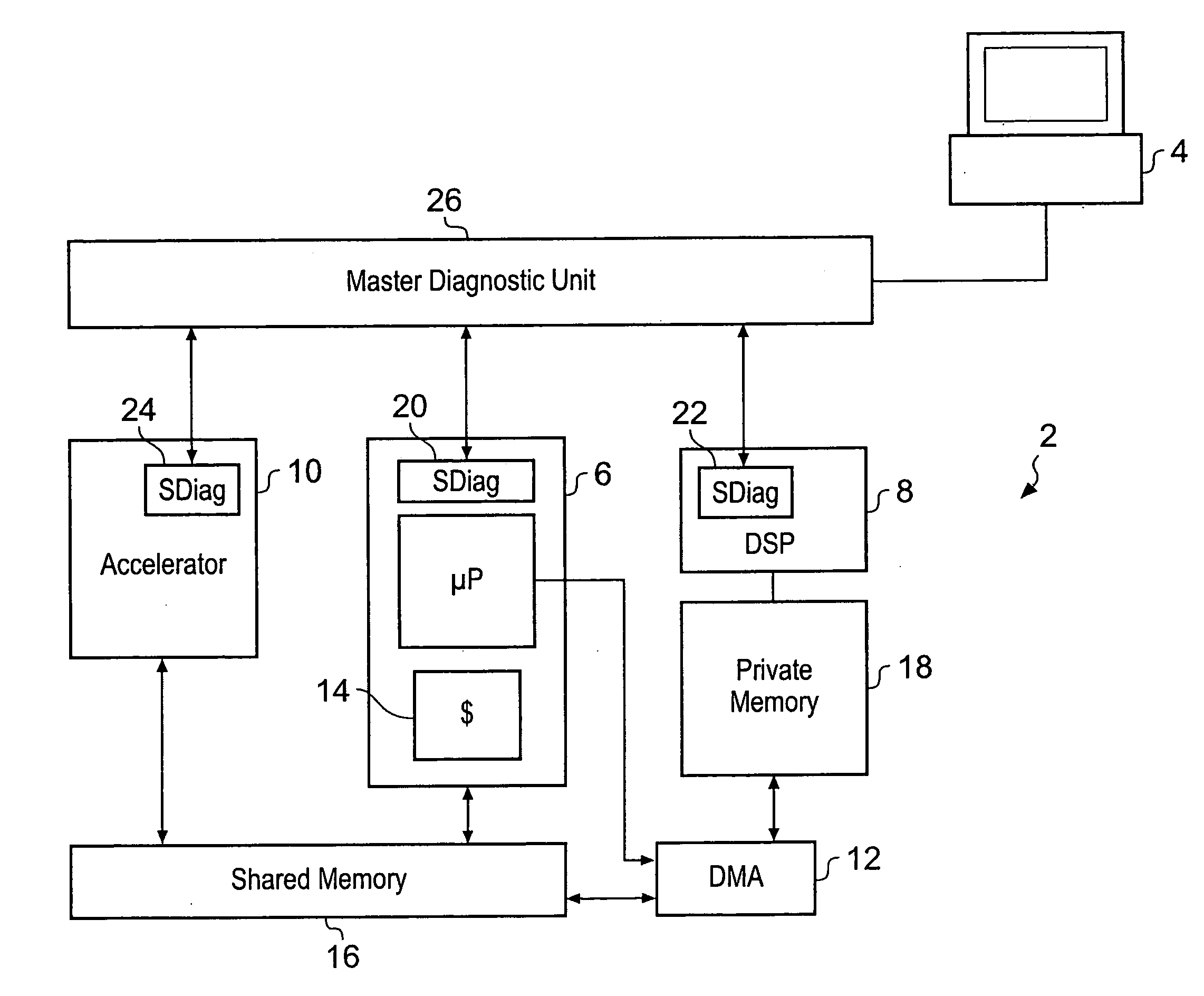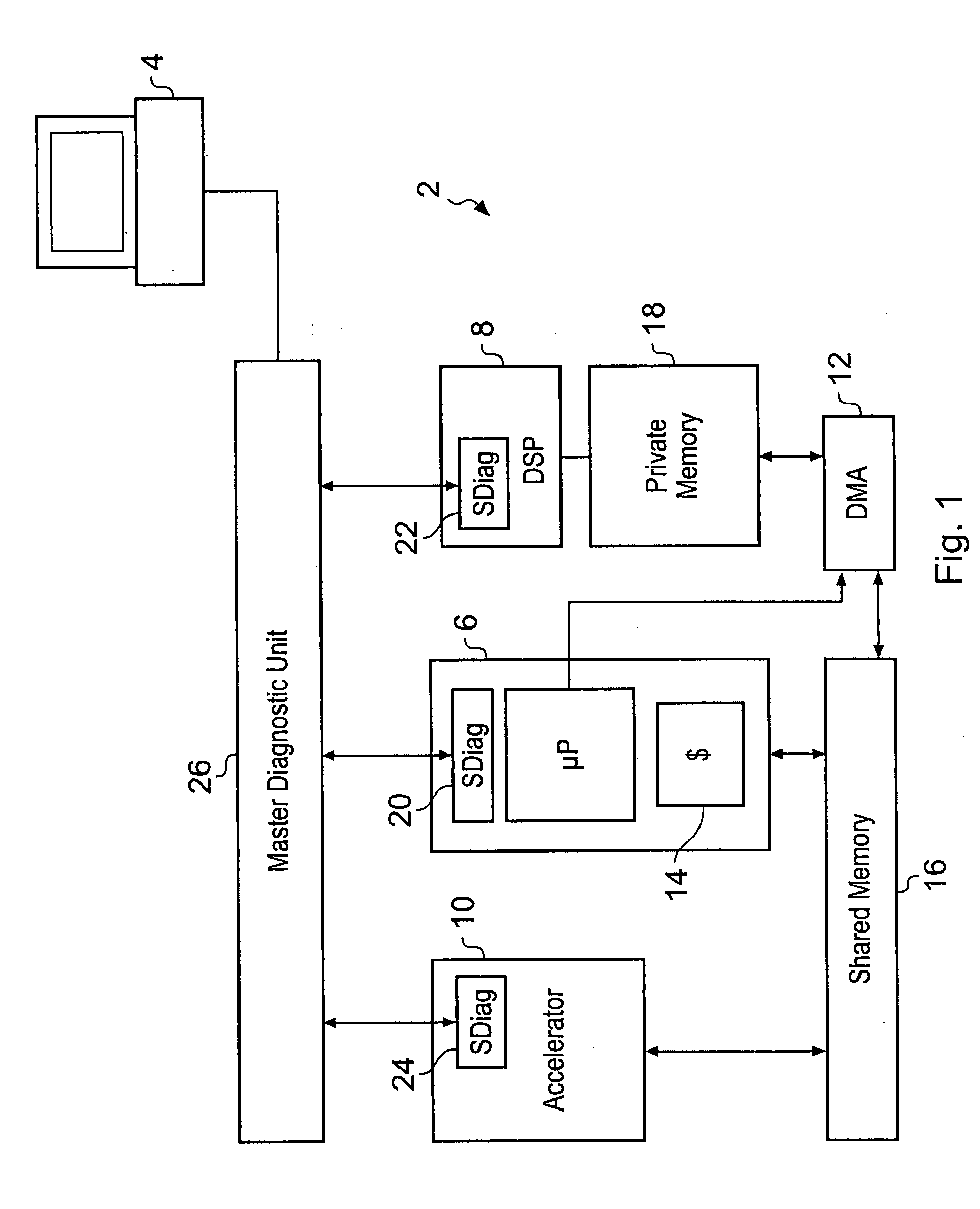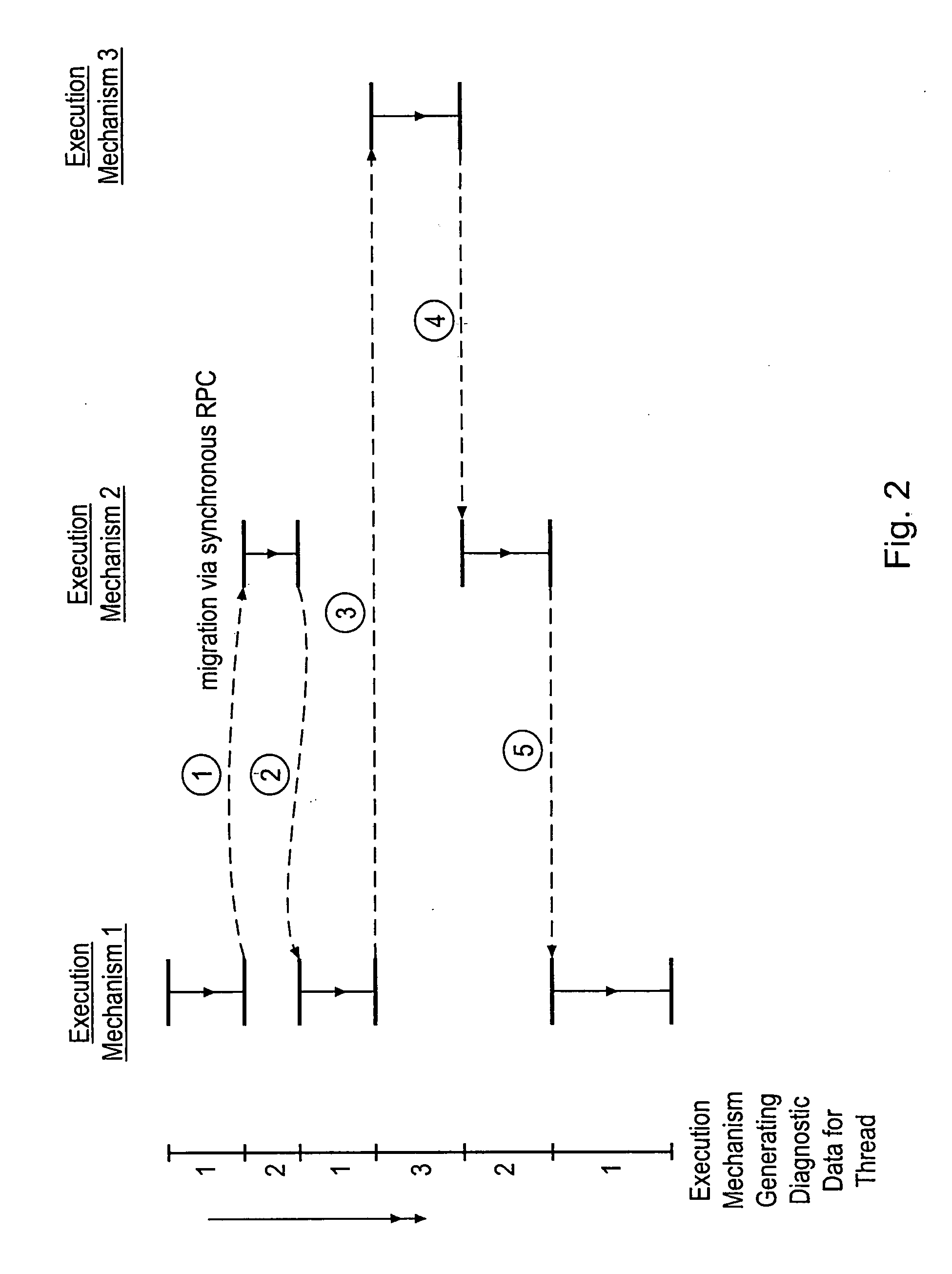Performing diagnostic operations upon an asymmetric multiprocessor apparatus
a multiprocessor and diagnostic technology, applied in the field of data processing systems, can solve the problems of limiting the approach to processors which are identical, inefficient to some degree, and the symmetric multiprocessor is a relatively inefficient way of implementing such processing, so as to facilitate the task of identifying and understanding, and present technique.
- Summary
- Abstract
- Description
- Claims
- Application Information
AI Technical Summary
Benefits of technology
Problems solved by technology
Method used
Image
Examples
Embodiment Construction
[0029]FIG. 1 schematically illustrates an asymmetric multiprocessor apparatus 2 connected to a general purpose computer 4. The general purpose computer is used to program and control diagnostic operations. The asymmetric multiprocessor apparatus 2 comprises a plurality of execution mechanisms in the form of a general purpose processor 6, a digital signal processor 8, an accelerator 10 and a direct memory access (DMA) unit 12. It will be appreciated that different combinations of execution mechanisms may be provided within asymmetric multiprocessor apparatus, such as an VLIW processor and / or a coprocessor. Furthermore, such an asymmetric multiprocessor apparatus may include multiple execution mechanisms of a given type, which may be identical, as well as one or more execution mechanisms of a different type, e.g. a single general purpose processor with multiple DSP units.
[0030]The asymmetric multiprocessor apparatus 2 of FIG. 1 has an asymmetric memory hierarchy comprising a cache mem...
PUM
 Login to View More
Login to View More Abstract
Description
Claims
Application Information
 Login to View More
Login to View More - R&D
- Intellectual Property
- Life Sciences
- Materials
- Tech Scout
- Unparalleled Data Quality
- Higher Quality Content
- 60% Fewer Hallucinations
Browse by: Latest US Patents, China's latest patents, Technical Efficacy Thesaurus, Application Domain, Technology Topic, Popular Technical Reports.
© 2025 PatSnap. All rights reserved.Legal|Privacy policy|Modern Slavery Act Transparency Statement|Sitemap|About US| Contact US: help@patsnap.com



